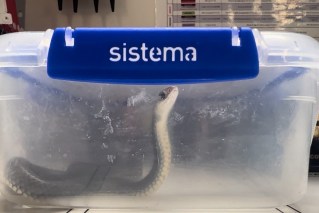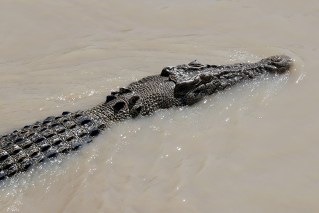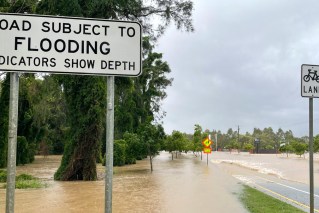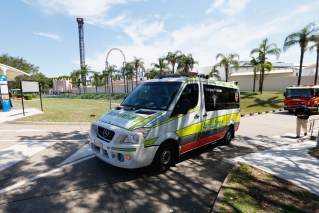Marine fossil found in outback Queensland

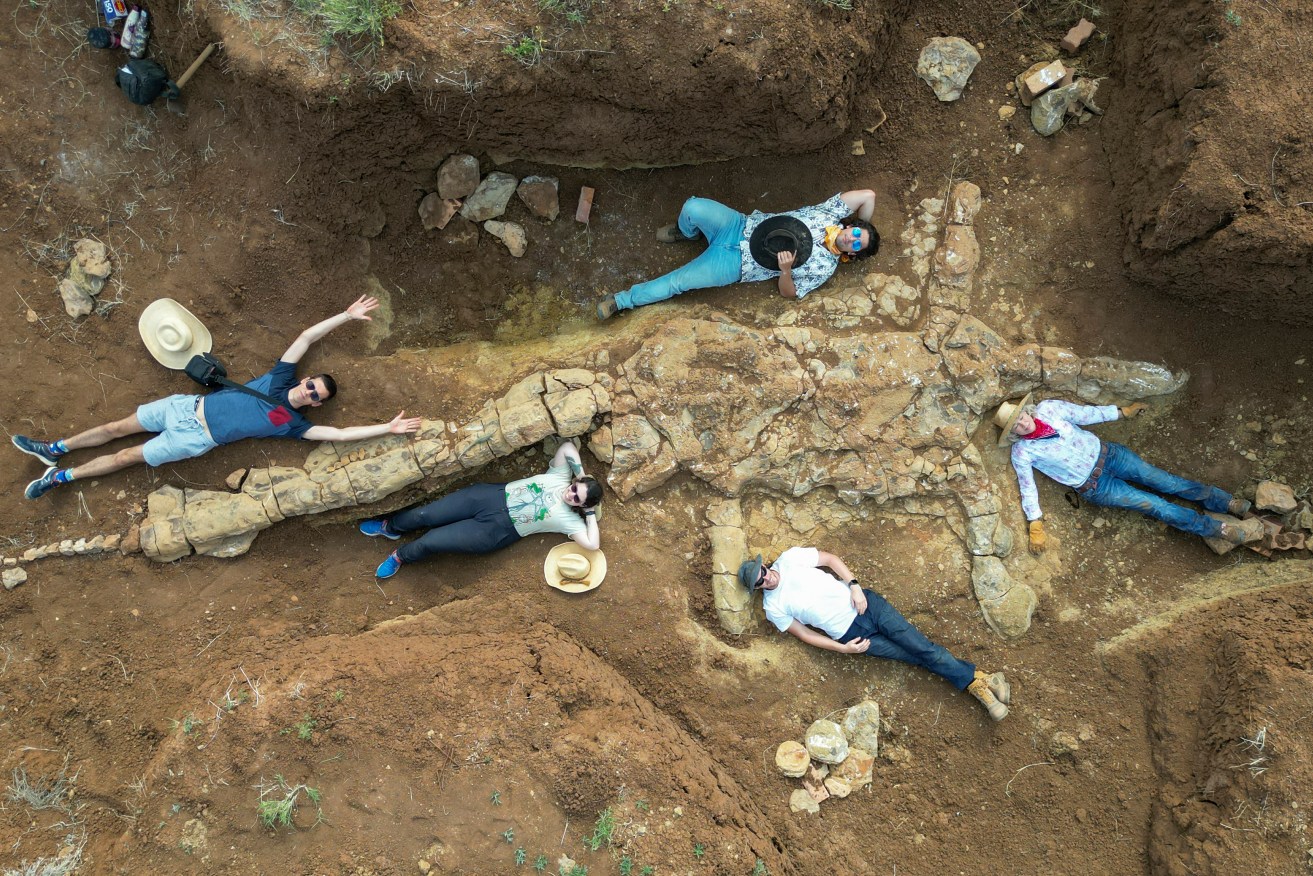
The remains of a 100-million-year-old marine reptile have been found at an outback Queensland station. Photo: AAP
Three amateur palaeontologists have discovered the remains of a 100-million-year-old long-necked marine reptile at an outback Queensland station.
In an Australian first, the complete skeleton of an ancient plesiosaur, or extinct marine reptile, was discovered at a sprawling remote property in the McKinlay region in what has been described as the Rosetta Stone of marine reptile palaeontology.
A team of museum palaeontologists travelled to the remote site to collect the fossil of the elasmosaur, a plesiosaur that lived alongside the dinosaurs.
Source: YouTube/Queensland Museum Network
The elasmosaurus lived in the Eromanga Sea, which covered large parts of inland Australia between 140 and 100 million years ago.
The recovery was led by Queensland Museum Network senior scientist Dr Espen Knutsen, who said the remains were the first known head and body of an Australian elasmosaur to be held in a museum collection.
“We were extremely excited when we saw this fossil – it is like the Rosetta Stone of marine palaeontology as it may hold the key to unravelling the diversity and evolution of long-necked plesiosaurs in cretaceous Australia,” Dr Knutsen said.
“We have never found a body and a head together, and this could hold the key to future research in this field.”
The Rosetta Stone is a large block of granite covered in inscriptions that was discovered in 1799 in Egypt, allowing scholars to decipher ancient texts.
Dr Knutsen said he had been looking for “such a fossil” for years.
“They’re pretty hard to come by globally speaking – not just within Queensland,” Dr Knutsen said.
“Very, very rarely you’ll find a body and head together.
“Because the head is so far away from the body at the end of this little neck, that’s one of the first things that gets disarticulated from the rest of the skeleton.”
There are well over 100 species of plesiosaurs known worldwide – some had long necks and small heads, and some had short necks with giant heads.
Elasmosaurus came to the water’s surface to breathe air and had slender teeth for catching fish, crabs and molluscs.
Scientists have discovered plesiosaur fossils with stones in the stomach area, showing they swallowed stones (called gastroliths) to either grind up food in their stomachs or as ballast to aid in diving.
Queensland Museum Network CEO Dr Jim Thompson said the find would help paint a comprehensive picture of Queensland’s Cretaceous marine reptiles.
“We now hold the only head and body of an Australian elasmosaur in the world, and this significant find will contribute greatly to vital research into Queensland’s Cretaceous past,” Dr Thompson said.
“Queensland Museum Network holds one of Australia’s most complete plesiosaur specimens, nicknamed ‘Dave the Plesiosaur’, which was discovered in 1999. However, despite having 80 per cent of its bones, it was missing a head, fins and tail tips.”
Along with the new skeleton, the remains of plesiosaurs and ichthyosaurs were discovered and collected on the field trip, which will be transported to Townsville for preparation and further research.
The rare fossil was discovered by a station owner Cassandra alongside fellow amateur fossil sleuths Sally and Cynthia, known as the ‘Rock Chicks’.
The find is one of the biggest discovered by the Rock Chicks, who have walked hundreds of kilometres on their quest to uncover fossils which include a plesiosaur each, a kronosaurus, an ichthyosaur and several fish and turtles.
They’re already planning their next hunt.
“Let’s keep the paleos busy,” Cassandra said.
-with AAP

